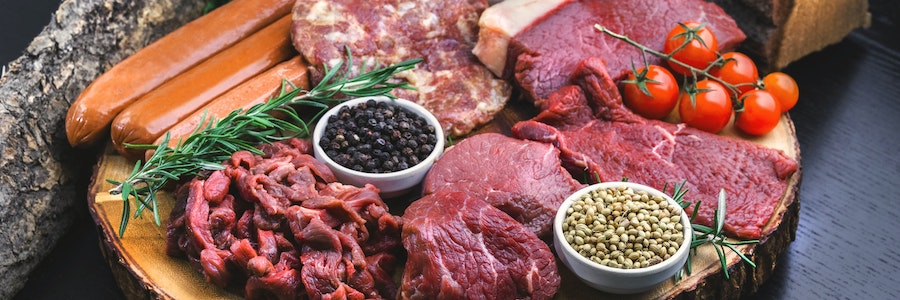The latest challenge to animal meat, cultivated or cell-based meat, comes from a lab, and the U.S. Food and Drug Administration (FDA) has taken the first step in the process to allow the sale of biotechnology-created meat to be sold to consumers.
This first step was the FDA’s release at the end of December 2022 of a pre-market consultation letter in response to an application by San Francisco-based Upside Foods, which is requesting approval to sell its lab-created chicken to consumers. It’s merely the first step in the approval process but it’s causing quiet a stir among the over 80 cultivated meat startups and their investors who believe Americans have a desire for meat produced through biotechnology.
In addition to further analysis by the FDA of Upside Foods’ faux chicken, the U.S. Department of Agriculture (USDA), which shares regulatory jurisdiction with the FDA, also has to approve the company’s cell-based chicken for sale in grocery stores and directly to consumers.
Each of the other numerous companies wanting to sell meat produced from cultured animal cells must go through the same process that Upside Foods is doing in order to receive government approval. A number of those other companies have now started the process, hoping to offer cultivated meat to consumers this year.
Here’s my analysis of the latest challenge – a challenge backed by hundreds of millions in investment capital – on animal meat.
First, it should be pointed out that Americans love animal meat and eat a lot of it. Additionally, cultivated or cell-based meat isn’t the only multi-million dollar challenge to meat. Plant-based meat companies and advocates have been arguing for years now that consumers would flock to these branded products such as Beyond Meat and many others for reasons of taste, environmental concerns over animal agriculture and for ethical reasons; a preference for what they call “no kill” meat over animal meat.
Consumers aren’t choosing plant-based meat over animal meat though. Plant-based meat accounts for only 1.4% of total meat category sales in the US, according to The Plant-Based Foods Association and the Good Food Institute, both of which are pro-plant-based meat industry groups. To put it another way, animal meat – beef, pork, chicken and the like – accounts for a whopping
98.6% of all meat sold in grocery stores in the country. Total annual meat sales in U.S. grocery stores is around $80 billion.
Additionally, sales of plant-based meat have stalled. For example, in 2018 total annual sales of plant- based meat in the US was $804 million, growing to $957 million in 2019, and to $1.4 billion in 2020. But between 2020 and the end of 2021, sales growth was flat. Total plant-based meat sales at the end of 2021 remained at $1.4 billion. Little to no sales growth is expected for 2022 either.
There’s even less consumer demand for cultivated meat than there is for plant-based meat..

Americans have a fear and built-in bias against food products created through biotechnology, which is what cell-based meat is, even though genetic modification is common for some existing foods like soy and corn, along with some fruits like oranges and kiwis, which are genetically modified to be resistant to certain diseases.
The term “frankenfoods” is often used in a negative way to describe such foods. A famous example was the Flavr Savr tomato, the first commercially-grown, genetically-modified tomato to be granted a license in the US. The Flavr Savr tomato was created by the heavily-funded California company Calgene in the 1980s. It was launched in retail stores in 1994 and was a huge failure. Three years later in 1997, Monsanto, which had acquired Calgene in the interim, removed the Flavr Savr from store shelves. The reason for the failure was a lack of acceptance by consumers because it was a genetically-modified tomato.
Cultivated meat must overcome the same stigma and more in order to first even get on store shelves and, more importantly, to gain consumer acceptance. Achieving the former will probably happen but achieving the latter in a meaningful way is unlikely; a meaningful way defined as creating a strong consumer base for cell-based meat.
Investors are betting hundreds of millions of dollars on dozens of companies in the cultivated or cell-based meat business. These companies in-turn are counting on grocers and restaurants to offer their biotechnology-produced meat for sale and to support it. I’m skeptical that many retailers and food service providers will do so.
Americans continue to enjoy eating animal meat, keeping ranchers and farmers very busy.
Americans now eat more than 220 pounds of meat per person, per year, compared to about 193 pounds a year in the early 1980s, according to the USDA.
Additionally, US retail meat sales for the 52-week period ending May 2022 were $85 billion, a 5.8% increase over the previous year, according to research firm IRI. Chicken sales topped the list, hitting over $15 billion, a 10.6% increase over the same period.
Year-over-year growth of 10.6% for a mature segment like chicken, which is what Upside Foods wants to disrupt with its cultivated chicken, is downright amazing and offers solid evidence that it’s popular with consumers.
Cultivated meat could hit the market by the end of 2023. There will be huge attention in the mass media but little challenge to livestock producers when it comes to the sales of animal meat and the challenge to it from biotechnology-produced meat.
My Job Depends on Ag Magazine columnist and contributing editor Victor Martino is an agrifood industry consultant, entrepreneur and writer. One of his passions and current projects is working with farmers who want to develop their own branded food products. You can contact him at: [email protected].







